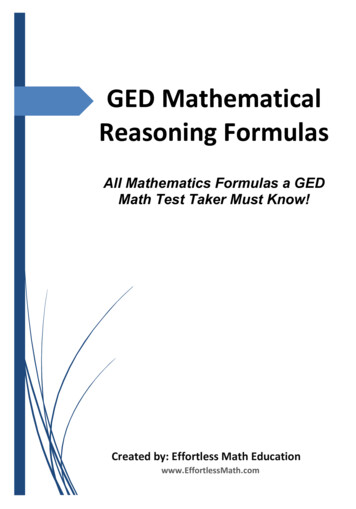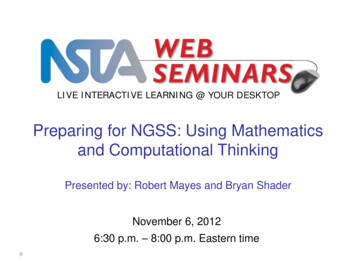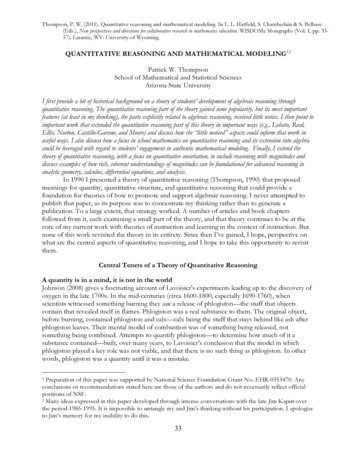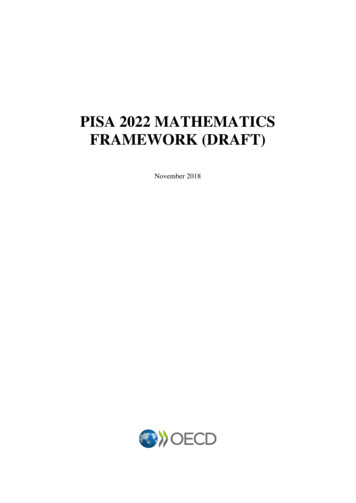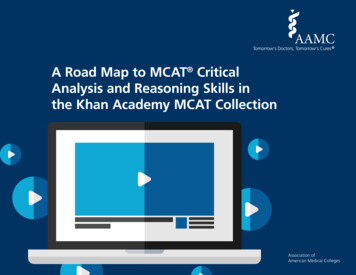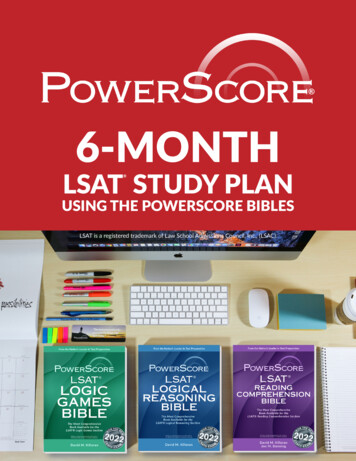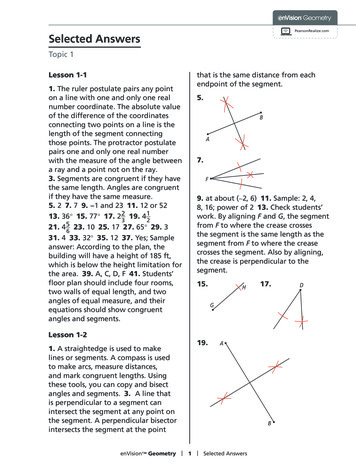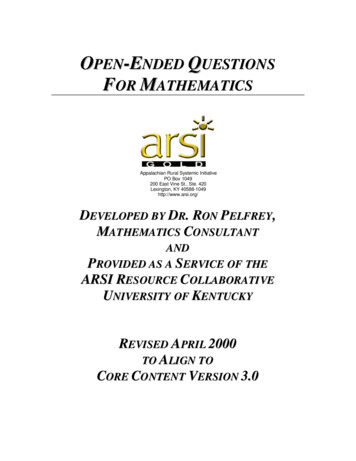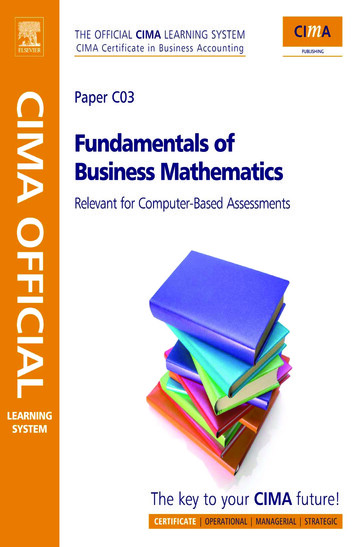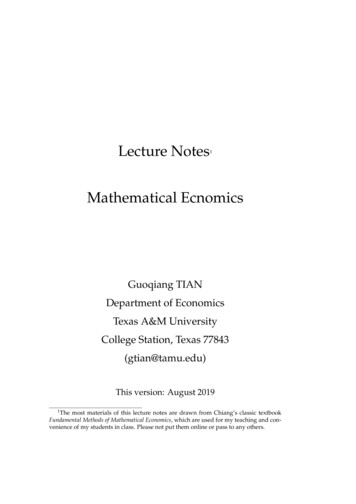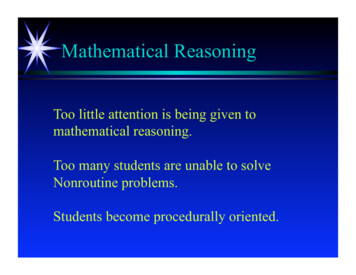
Transcription
Mathematical ReasoningToo little attention is being given tomathematical reasoning.Too many students are unable to solveNonroutine problems.Students become procedurally oriented.
Mathematical ReasoningWhat number does 11 tens, 8 ones, and 2hundreds make?Responses: 1182; 2118; 118. 02; 318Grade sixGrade sevenGrade eightLevel 343%46%50%2,000 were not successful.
Mathematical ReasoningJill had 23 candies. She put the same numberin each of two bags and had seven candiesleft over. How many did she put in each bag?Grade sixGrade sevenGrade eightLevel 368%69%70%
Problem SolvingDEFINITION:Problem solving is what you do whenyou don’t know what to do.If you know how to get an answer,it is not problem solving
Problem Solving Strategies
Problem SolvingProblem solving now appears in allstandards Strand Wayof Teaching
Which cubes share exactly fourfaces with other cubes?How many are there?
Problem Solving StrategiesTry a numberLook for patternsGuess and testDraw a diagramWork backwardsAct it out.
Problem SolvingFourth Grade: Find all the factors of 300.“I know that between a hundred and ahundred fifty, none of those can workbecause a hundred is, goes into threehundred three times, and a hundred andfifty goes in two times, and there’s nothingbetween two and three.”
The distance between the tips of myfingers is 65 inches. Each of my arms is24 inches long. How far is it across mychest?
ProblemsCatsAt the zoo Patty saw 21 lions andtigers. There were five more lionsthan tigers. How many weretigers?
A non-routineHow can you make 37 cents with sevencoins?
Mystery numbersI am thinking of two numbers.When I add them I get 15.When I subtract them I get 3.What are the two numbers?
Learning From Mistakes36 X 17To make it easier, I added 4 to 36 to make 40 and 3 to 17 tomake 20.40 X 20 800.Then I subtracted 4 from 800 andthen 3 from 796. My answer was793.
Problem Solving
Teaching Problem Solving
Effective Instruction How we teach is more important than whatwe teach The focus should be on learning Students should develop a sense-makingorientation Problem solving should be a major theme
Instructional Strategies
Problem Centered InstructionLesson OpenerTasksPCLCollaborationPresentations
Problem Centered Learning should be problematic require thought lead somewhere mathematicallyPerturbations are seeds of learning?
Pairing Students More engagement More learning Develops confidence Better self-esteem
Presentations
Problem Centered Learning Selecting appropriate tasks Negotiating social norms Facilitating interactions Being nonjudgmental Promoting intellectual autonomy
Social norms A task requires time A task requires investigation Develop your own methods Work together and listen to each other Explain you thinking Expect to be puzzled
Negotiating Social Norms Teacher does not explain methods to be used Students are responsible for determining whetheranswers are correct, not the teacher Students use solution methods that make senseto them Students expect to be puzzled, to be challenged
Lesson Openers
Quick Draw
Quick Draw
Summary
Empty Numberline6578 ?90 - 78 90
Number Relationships80100 ?105 ?110
Number Relationships800 9001250 ?
Math Squares691148121550
Two Waysx42835151210120
Two Ways 1572345
There are 54 meaningful computations in one page of Two Ways.x 2 205 25500 20 x 2 12 x 3/412 x 41/2 x 830 1 1/220 x 320 x 1020 40 1/250 x 50050 10 1 x 46 1/2 x 4 22 16 9 x 9020 40 10 2 6 x 48 x 430 x 9060 x 206 x 31/2 3 3 x 1/240 2 3 x 601/6 x 2 32 x 41/4 1/2 16 x 116 32 1/8 x 1/2 x 15 1506 x 22 6 1/2 x 1/420 1/4 1/2 x 2 1/2 x 5x 2 201/4 54 4/5 16 20 4 x 16300 60 25 x 410 x 604/5 5 300 150 5 x 54/5 x 20
Goals Number Sense Mathematical Reasoning Spatial Sense Positive Disposition
Fourth Grade: Find all the factors of 300. "I know that between a hundred and a hundred fifty, none of those can work . Math Squares 12 15 8 50 9 1 1 6 4. Two Ways x 4 2 5 12 3 8 15 10 120 15 7 23 45 Two Ways. There are 54 meaningful computations in one page of Two Ways.
